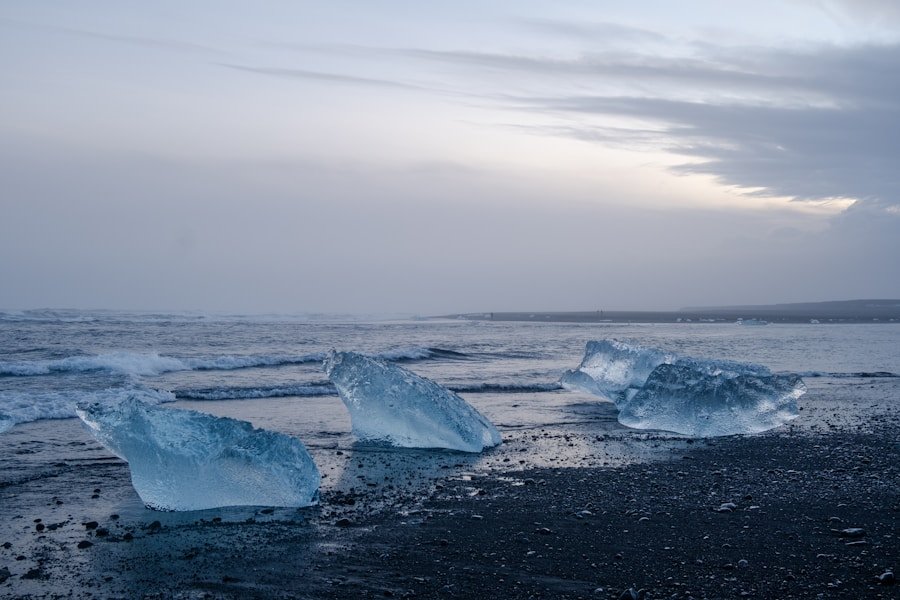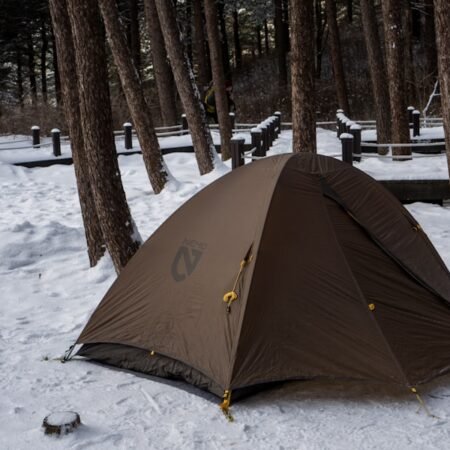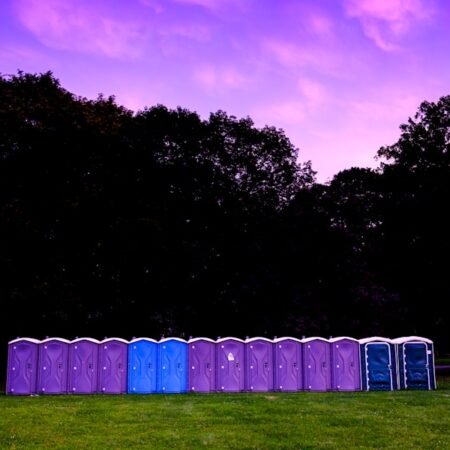When camping, an emergency blanket serves as a vital tool for shelter and protection. In the event of unexpected weather conditions, such as rain or wind, the blanket can be utilized to create a makeshift shelter. By securing the corners to trees or using sticks as support, campers can construct a simple lean-to or A-frame shelter, providing protection from the elements.
The reflective material of the emergency blanket also helps to retain body heat, keeping campers warm and dry in adverse conditions. Furthermore, the blanket can be used as a ground cover to protect against moisture and provide insulation from the cold ground. In addition to providing shelter from the elements, an emergency blanket can also be used for protection against insects and other pests.
By creating a barrier between the ground and the camper, the blanket can help prevent bites and stings from insects, as well as protect against small animals and critters. This added layer of protection can make a significant difference in the comfort and safety of campers, particularly in remote or wilderness areas where medical assistance may not be readily available.
Key Takeaways
- Emergency blankets can be used for shelter and protection from the elements during camping trips.
- They are effective in retaining body heat and preventing hypothermia in emergency situations.
- The reflective surface of emergency blankets can be used to signal for help in case of emergencies.
- They can also be used for first aid and injury management, providing insulation and protection for wounds.
- Emergency blankets can serve as ground cover and insulation, as well as aid in water collection and condensation.
Heat Retention
Trapping and Reflecting Body Heat
The reflective material of an emergency blanket is designed to trap and reflect body heat, helping to keep campers warm in cold temperatures. This is especially crucial in emergency situations, such as getting lost or stranded in the wilderness, where the blanket can be wrapped around the body to prevent hypothermia and maintain core body temperature.
Essential for Emergency Preparedness Kits
The heat retention properties of an emergency blanket make it an essential item for emergency preparedness kits. In the event of a natural disaster or other emergency situation, having a reliable source of warmth can be life-saving.
Preparedness for Unforeseen Circumstances
By having an emergency blanket on hand, campers can ensure that they are prepared for unexpected changes in weather or other unforeseen circumstances. This is particularly important in situations where a fire may not be possible or safe to build, such as during heavy rain or strong winds.
Signal for Help
In addition to providing shelter and warmth, an emergency blanket can also be used as a signal for help in emergency situations. The reflective material of the blanket is highly visible, especially in sunlight, making it an effective tool for signaling rescuers or other campers in the area. By laying the blanket out on the ground or waving it in the air, campers can attract attention and increase their chances of being spotted by search teams or passing hikers.
Furthermore, the reflective properties of the emergency blanket can also be used to signal for help at night. By using a flashlight or headlamp to shine light onto the blanket, campers can create a beacon that is visible from a distance. This can be especially useful in situations where visibility is low, such as in dense forests or mountainous terrain.
First Aid and Injury Management
| Uses of Emergency Blanket in Camping |
|---|
| 1. Retaining body heat |
| 2. Providing shelter from the elements |
| 3. Signaling for help |
| 4. Creating a makeshift sleeping bag |
| 5. Protecting gear from rain or moisture |
| 6. Acting as a ground cover |
Another important use of an emergency blanket in camping is for first aid and injury management. In the event of an accident or injury, the blanket can be used to create a makeshift stretcher for transporting injured campers. By securing the corners of the blanket to sturdy branches or poles, campers can create a stable platform for carrying injured individuals to safety.
Additionally, the blanket can be used to immobilize limbs or provide cushioning for makeshift splints, helping to stabilize injuries until professional medical help can be obtained. Furthermore, the reflective material of the emergency blanket can also be used to create a visible marker for search and rescue teams. By laying the blanket out in a prominent location near the injured individual, campers can help guide rescuers to their location and expedite the process of receiving medical assistance.
Ground Cover and Insulation
In addition to providing shelter and warmth, an emergency blanket can also be used as ground cover and insulation in camping situations. The durable material of the blanket helps to protect against moisture and provide a barrier between campers and the cold ground. This is especially important in cold or wet conditions, where exposure to dampness can lead to discomfort and even health risks such as hypothermia.
Furthermore, the insulation properties of the emergency blanket make it an essential item for camping in colder climates or during winter months. By placing the blanket underneath sleeping bags or mats, campers can create an additional layer of insulation that helps to retain body heat and improve overall comfort during rest periods.
Water Collection and Condensation
Another important use of an emergency blanket in camping is for water collection and condensation management. In emergency situations where access to clean water may be limited, campers can use the blanket to collect rainwater or dew for drinking and cooking purposes. By creating a simple funnel with the blanket and securing it with rocks or other weights, campers can direct water into containers or directly into their mouths for hydration.
Additionally, the reflective material of the emergency blanket can also be used to manage condensation inside tents or shelters. By hanging the blanket inside the shelter, campers can prevent moisture buildup on walls and ceilings, reducing the risk of dampness and mold growth. This is especially important in humid or rainy environments where condensation can be a common issue.
Multi-Purpose Tool
Finally, an emergency blanket is a multi-purpose tool that can be used for a wide range of tasks in camping situations. In addition to its primary uses for shelter, warmth, and signaling, the blanket can also be used for other practical purposes such as carrying gear, creating shade, or even as a makeshift poncho in rainy conditions. The lightweight and compact design of the blanket makes it easy to carry and store in backpacks or emergency kits, making it a versatile and essential item for outdoor adventures.
Furthermore, the durability of the emergency blanket makes it suitable for use in various environments and conditions, from rugged mountain terrain to sandy desert landscapes. This versatility makes it an invaluable asset for campers who may encounter unpredictable weather or other challenges during their outdoor excursions. In conclusion, an emergency blanket is a crucial item for camping that serves multiple purposes beyond its primary function as a source of warmth and protection.
From providing shelter and signaling for help to managing injuries and collecting water, the versatile nature of the emergency blanket makes it an essential tool for outdoor enthusiasts and emergency preparedness alike. By understanding its various uses and incorporating it into their camping gear, campers can ensure that they are well-equipped to handle unexpected situations and enjoy a safe and comfortable outdoor experience.
FAQs
What is an emergency blanket?
An emergency blanket, also known as a space blanket or thermal blanket, is a lightweight, compact, and highly reflective blanket that is designed to retain body heat and provide insulation in emergency situations.
What are the uses of an emergency blanket in camping?
Emergency blankets are commonly used in camping for various purposes such as providing warmth and insulation, creating a makeshift shelter, signaling for help, and protecting against wind and rain.
How does an emergency blanket provide warmth and insulation in camping?
The reflective surface of an emergency blanket helps to retain and reflect back body heat, thus providing warmth and insulation in cold weather conditions during camping.
How can an emergency blanket be used to create a makeshift shelter in camping?
An emergency blanket can be used to create a simple shelter by tying it between trees or using it as a ground cover to protect against moisture and wind. It can also be used as a tarp or a windbreak.
Can an emergency blanket be used for signaling for help in camping?
Yes, the reflective surface of an emergency blanket can be used to signal for help by creating flashes of light that are visible from a distance. It can also be used as a signaling flag or marker.
How can an emergency blanket protect against wind and rain in camping?
An emergency blanket can be used as a windbreak or a barrier to protect against wind and rain by creating a barrier around the camping area or by using it to cover the entrance of a shelter.












